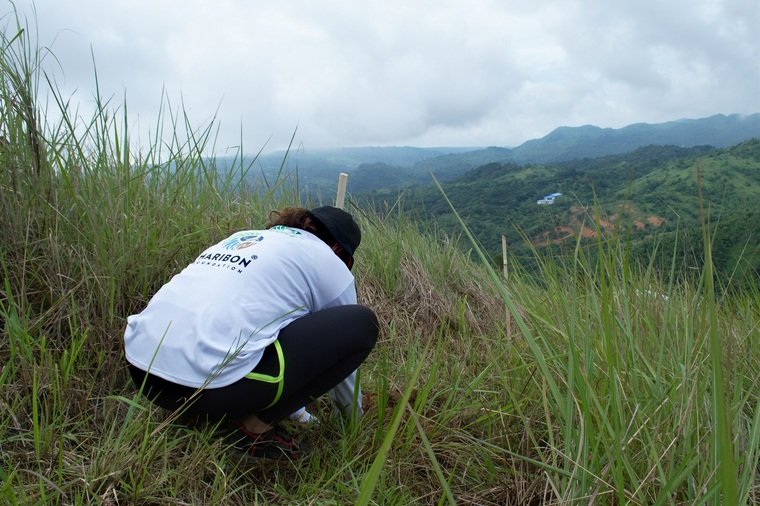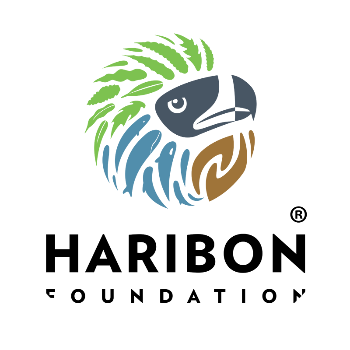
Adopt-a-Seedling Forest Restoration
<b>The Problem</b>In the 1600s, almost 97% of the Philippines’ total area of 30 million
hectares (has) was covered with old growth forest. The previously spectacular
forests of the Philippines are now remains of a past era. With only 22.8% cover
left from 70% in the 1900s, the ecological services from this ecosystem are
continuously declining. Numerous pressures to our forests like mining, timber
poaching, and land conversion such as kaingin are the leading causes of forest
loss. In addition, the use of invasive exotic species in tree planting programs
exacerbates the degradation of our forests. <b >Strategy</b>The <b>Forests for Life</b> (formerly known as ROAD to 2020) movement is an environmental conservation movement with a clear vision to
restore one million hectares of Philippine rainforests using native tree
species. The movement uses Rainforestation Technology, which is the planting
native tree species in order to recover and conserve biodiversity, optimize our
supply of forest benefits and ecosystem services, reduce the risks of natural
hazards such as landslides, and provide options for sustainable livelihood.Planting native trees for forest restoration
provides multiple benefits as native species are more adapted to the local
environment, providing our wildlife with a familiar resource and with slower
growing trees that live longer to sequester more CO2 in their
lifespans.<b >ADOPT-A-SEEDLING</b>You can be part of the Forests
for Life movement by joining our Adopt-a-Seedling program where individuals and
groups can make a donation for a seedling to be planted in their name.
Each seedling amounts to Php 300.00 and is inclusive of initial seedling production, community training and nursery
establishment, livelihood incentives, site preparation and most importantly, maintenance
and monitoring for 3 years with bi-annual monitoring reports. This way, our
forest restoration projects are not only one-off events but rather it creates a
lasting legacy to our forest lands and communities.<b>Communities Served</b>Our community partners or partner
People’s Organizations (PO) benefit from Haribon’s forest restoration as
primary caretakers of the planted seedlings. Livelihood support is provided to
PO members who are tasked to take care of the seedlings and its maintenance.
Surrounding communities also
benefit from restoration activities as it brings back ecological balance which
ensures the continuous provision of ecological services (e.g. clean air, water,
food, etc.). In the long term, healthy forests also protect us from extreme weather
conditions and calamities such as storms, floods, and landslides brought about
by climate change.<b > </b><b >Site Information</b>
The primary planting site is within the Mts. Banahaw-San Cristobal
Protected Landscape (MBSCPL) and the entry point is the Municipality of San
Pablo, Laguna. The whole MBSCPL has a total land area of ten thousand nine
hundred and 59/100 (10,900.59) hectares and is home to different native and
endemic species, several of which are already threatened and in need of
conservation.The travel time from Quezon City to the entry point of San Pablo, Laguna
planting site is about two hours and thirty minutes.
</b><b >Site Information</b>
The primary planting site is within the Mts. Banahaw-San Cristobal
Protected Landscape (MBSCPL) and the entry point is the Municipality of San
Pablo, Laguna. The whole MBSCPL has a total land area of ten thousand nine
hundred and 59/100 (10,900.59) hectares and is home to different native and
endemic species, several of which are already threatened and in need of
conservation.The travel time from Quezon City to the entry point of San Pablo, Laguna
planting site is about two hours and thirty minutes. Ten (10) or more native tree species appropriate to the restoration site will be planted. Sample species may include, but are not limited to: Narra, Agoho, Molave, Antipolo, Guiho, Kamagong, Tobilas-tilos, Lauan, Tibig, Binunga, Malaruhat, Hauili, Lipote.For more details and activity coordination, you can also contact us through partnerships@haribon.org.ph
or through our phone lines: (+63 2 8) 421 1209.
Ten (10) or more native tree species appropriate to the restoration site will be planted. Sample species may include, but are not limited to: Narra, Agoho, Molave, Antipolo, Guiho, Kamagong, Tobilas-tilos, Lauan, Tibig, Binunga, Malaruhat, Hauili, Lipote.For more details and activity coordination, you can also contact us through partnerships@haribon.org.ph
or through our phone lines: (+63 2 8) 421 1209.





